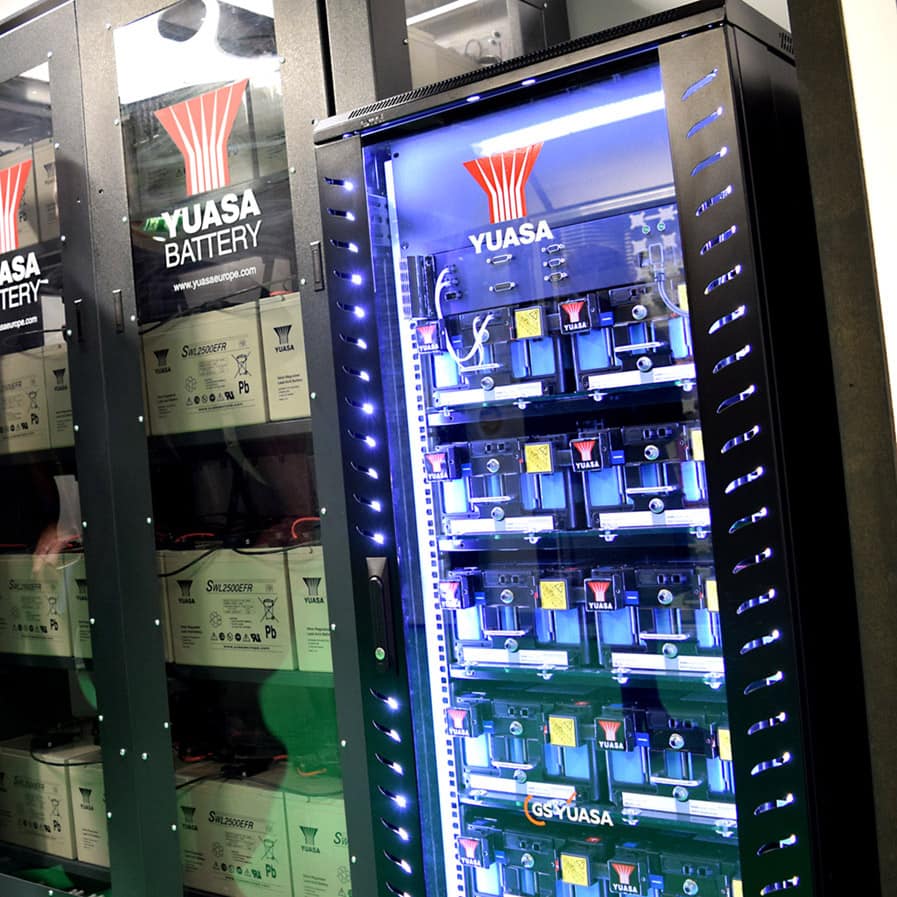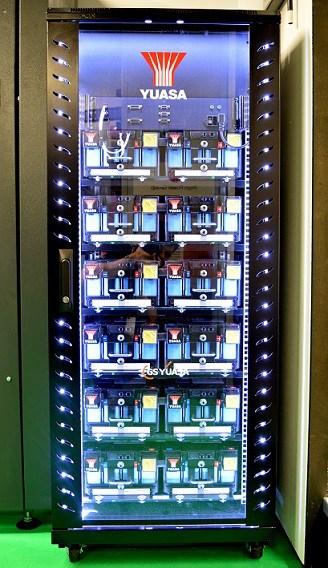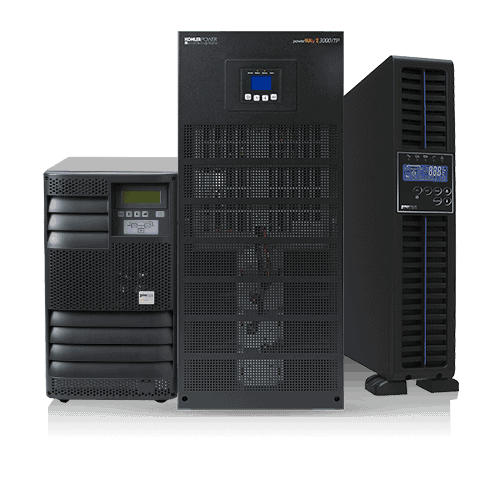Lead-acid VRLA batteries have long been the UPS energy source preferred by data centre operators, due to their proven reliability if well-managed, and low initial purchase cost. However, their dominance is increasingly being challenged by lithium-ion solutions. In this article, Alan Luscombe, director at KOHLER Uninterruptible Power Ltd., a KOHLER company, compares the attributes of each technology.
Data centre operators invest money and electrical energy in UPSs because they protect sensitive ICT equipment from power disturbances and blackouts. UPSs in turn depend critically on an energy source that can store power while the mains supply is good, then deliver it back through the UPS to the critical load if the mains fails or transgresses acceptable limits. Sometimes the requirement is for sustained power to keep a system operational over an extended time, but typically just short-term support is needed, either to allow the critical load to shut down safely, or for a generator, if available, to take over the supply.
Although other battery technologies, and other energy devices such as flywheels are available, lead-acid types – especially valve-regulated lead-acid or VRLA types – have been the most popular UPS solution for decades. They’re not perfect, but if their weak points are accommodated carefully, they provide many years’ reliable service at purchase pricing that’s hard to beat.
However, this position is now being challenged by lithium-ion or li-ion battery technology. This has been available for years, but recently the technology has improved and prices have dropped, so they are an increasingly competitive contender for static UPS applications. This article looks at the relative merits of each type. We consider the factors that drive UPS users’ battery selection; namely, capital cost and TCO, reliability, operating life, maintenance requirements, safety, weight, size and environmental specifications.
Much of the information below has been provided by Yuasa Battery Europe, and is based on their ongoing experience of supplying both technologies.
VRLA considerations
VRLA batteries’ initial purchase cost is lower, with li-ion types still being up to twice as expensive. Compared with earlier open-vented types, VRLA batteries are more environmentally-friendly and safe, and need less routine maintenance. However, their impedance always increases over time, reducing power capacity, and can increase sharply following a problem such as over-charging. Accordingly, they must be regularly checked for failing cells, or investment must be made into a fixed battery monitoring system.
VRLA batteries are very temperature-dependent, and must be kept within a temperature-controlled environment. Operation at temperatures significantly above the typically-recommended 20°C level will cause irreversible damage, while life expectancy is approximately halved for each 10°C increase in average operating temperature. Low temperatures have negligible impact on service life but reduce performance. Depending on the number of discharge cycles experienced and ambient temperature, a five-year ‘design-life’ VRLA battery can be expected to last three to four years, while a 10-year ‘design-life’ battery may last seven to eight years.
VRLA batteries also suffer from a voltage depression effect that occurs in the first few minutes of discharge. This is particularly pronounced at high currents and following extended periods of float charge. Although the voltage recovers later, the trough voltage can cause a UPS to trip unpredictably. This effect means that VRLA batteries should be specified to support a minimum autonomy of five minutes or more.
VRLA batteries require continuous charging to replace self-discharge losses, while over 90% of the current used during float charging can be wasted as heat. However, an advantage of float-charging VRLA batteries is that low state of charge (SoC) cells can become fully charged, while high SoC cells dissipate surplus energy as heat. This allows a series of VRLA cells to be easily maintained in a balanced-charge condition. Li-ion batteries require expensive electronic battery management systems (BMSs) to achieve the same balancing effect. However, BMSs are also sometimes used with VRLA systems supporting critical loads.
Lithium-ion performance and chemistry
Li-ion batteries, although more expensive to purchase, offer a longer operational life than VRLA, with 12 – 15 years being realistic. They are also up to 70% smaller and 60% lighter, and can work reliably at higher temperatures than VRLA batteries. It’s also important to note that li-ion batteries designed for UPS applications, unlike other types that have caused combustion problems in mobile phones, are optimised for safety rather than power density. These factors mean that li-ion batteries can be sited next to or within the UPS enclosure, rather than requiring a separate battery room with its own environmental conditioning. Li-ion batteries still need maintenance, but with longer intervals and simpler procedures than required for VRLA.
Li-ion’s improved performance stems from its chemistry; its chemical processes are fewer and simpler than those of VRLA batteries. While charging or discharging a lead acid cell the internal structure of the active materials is first dissolved, then re-built within the electrode structures. The sulphuric acid electrolyte also takes part in the chemical reaction and water is decomposed to oxygen and hydrogen in energy-wasting side reactions.
By comparison, the solid electrode structures in li-ion – metal oxide cells provide fixed crystalline lattices which act as hosts for single lithium ions that move freely between the positive and negative electrodes as the cell is charged and discharged. Detailed mathematical models are routinely used by li-ion design engineers to predict the performance of cells in complex operating patterns. This level of definition is not possible for lead acid cells even after 150 years of development.
This desirable li-ion predictability extends to ageing effects. VRLA failures occur primarily through positive electrode corrosion, which only manifest itself during the final weeks or months of operational life. By contrast, li-ion exhibits a steady, predictable loss of capacity. For example, if a cell’s performance diminishes to 80% of its original value in 10 years, it will take another 10 years, under the same conditions, to drop to 60%.
Fig.1: Yuasa ‘Plug and play’ li-ion power cabinet provides 300 kW of power for UPS systems
Conclusion
VRLA batteries will remain popular because of their proven reliability and lower initial purchase price. However, li-ion is increasingly offering a competitive TCO with longer life and reduced maintenance, while saving space for data centre owners – both because the batteries are smaller, and because they don’t need separate, temperature-maintained rooms. Li-ion can gain further traction if prices drop more, and owners accept that li-ion UPS solutions have been developed to optimise safety over maximum power density.
This article has been published in the September 2017 edition of Electrical Times magazine.






